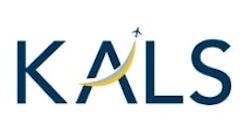Congress to Bump NASA Artemis Funds, but Requires Moon Lander Plan Within 30 Days
Congress is set to approve a new federal budget nearly 10 months after President Biden’s original request, and while NASA isn’t getting as much as it wanted overall, its Artemis budget for missions to the moon is more than originally requested.
The omnibus budget for 2022, which is expected to be approved as early as March 15 shows details on more than $24 billion in funding for NASA.
While more than the 2021 budget, it’s about $760 million less than what was asked for overall. But Congress opted to slide an extra $150 million over what was requested for the Space Launch System program that looks to return NASA to the moon.
A lot of it is tied up for funds to the Human Landing System, which is the method in which astronauts will be ferried from the Orion spacecraft to the lunar surface. Last year, NASA awarded the sole contract for the Artemis III mission to SpaceX’s Starship rocket.
At the time, members of Congress complained to NASA Administrator Bill Nelson they were unhappy with the lack of competition as there were three companies vying for the HLS job, and many expected two contracts to be awarded. Both of the two groups that lost out on the contract, including one led by Jeff Bezos’ Blue Origin, filed complaints that delayed work on the HLS that contributed to the delay in the Artemis timeline.
“It has been in no uncertain terms expressed to me by members of both the House and the Senate that they want a competition for the remaining lander contracts that will occur over the course of the decade following the first demonstration flight,” Nelson said in 2021.
NASA plans to send Artemis I, currently at Kennedy Space Center, on an uncrewed flight to the moon this year. Artemis II, a crewed mission to orbit the moon, but not land, is slated to fly no earlier than May 2024. Artemis III, which looks to send the first woman as part of a two-person crew to the lunar surface, is now slated for 2025.
In its budget, Congress has set aside nearly $1.2 billion for HLS, but used language to wave its finger at NASA.
“NASA is expected to make real investments in development that promote competition for the sustainable lander phase rather than additional studies,” it states. “The agreement urges NASA to enable a routine cadence of human transportation services to and from the moon with multiple providers, as practicable.”
It also puts a caveat stating that within 30 days of the budget’s enactment, NASA needs to deliver a public plan to explain “how it will ensure safety, redundancy, sustainability and competition in the HLS program.”
It also states NASA must supply HLS resource needs for 2023 to 2026.
The rest of the requested Artemis funds will go to support the first three missions, fund development of the larger Block 1B version of SLS for missions beyond Artemis III and begin construction of a second Mobile Launcher at KSC.
The first is slated to roll out with the Artemis I rocket from the Vehicle Assembly Building as early as March 16 for dress rehearsal tests at Launch Pad 39-B. Tests at the pad will include loading the rocket with propellant and draining it again, after which managers will take it back to the VAB for analysis. NASA is looking at launch windows in May, June and July for Artemis I, but that could slip to later in the year depending on results of the tests.
As far as the rest of the NASA budget goes, Earth science will get the most money ever given to the agency in a single year for that line item, but less than what was requested. The budget allots more than $7.6 billion for science missions overall with more than $2 billion for Earth science. That includes funding for the Plankton, Aerosol, Cloud, ocean Ecosystem (PACE) mission, Carbon Monitoring System mission and Geostationary Carbon Cycle Observatory (GeoCARB) mission among others.
“As a global leader in Earth science and our eyes in the sky, NASA is uniquely positioned to help the world understand and mitigate climate change,” Nelson said in 2021. “This funding request increases investment in climate research and science programs ... will deliver critical data to help us better understand Earth as a system and prepare and protect our communities in the face of natural hazards.”
The science budget is also where funding is for more lunar missions including nearly $500 billion for discovery and exploration efforts. Those include $22.1 billion for the Lunar Reconnaissance Orbiter and $107.2 billion for the Volatiles Investigating Polar Exploration Rover (VIPER) mission.
Closer to Earth, the budget provides another $101 billion for the commercialization of low-Earth orbit. A SpaceX Crew Dragon is about to take the first all-civilian crew for Axiom Space to the space station, and allow a commercial entity’s customers to utilize NASA’s side of the ISS for the first time.
NASA currently plans to keep the ISS in space until 2030, but in time will hand off LEO needs to commercial companies such as Axiom Space or others that build their own space stations.
©2022 Orlando Sentinel. Visit orlandosentinel.com. Distributed by Tribune Content Agency, LLC.




